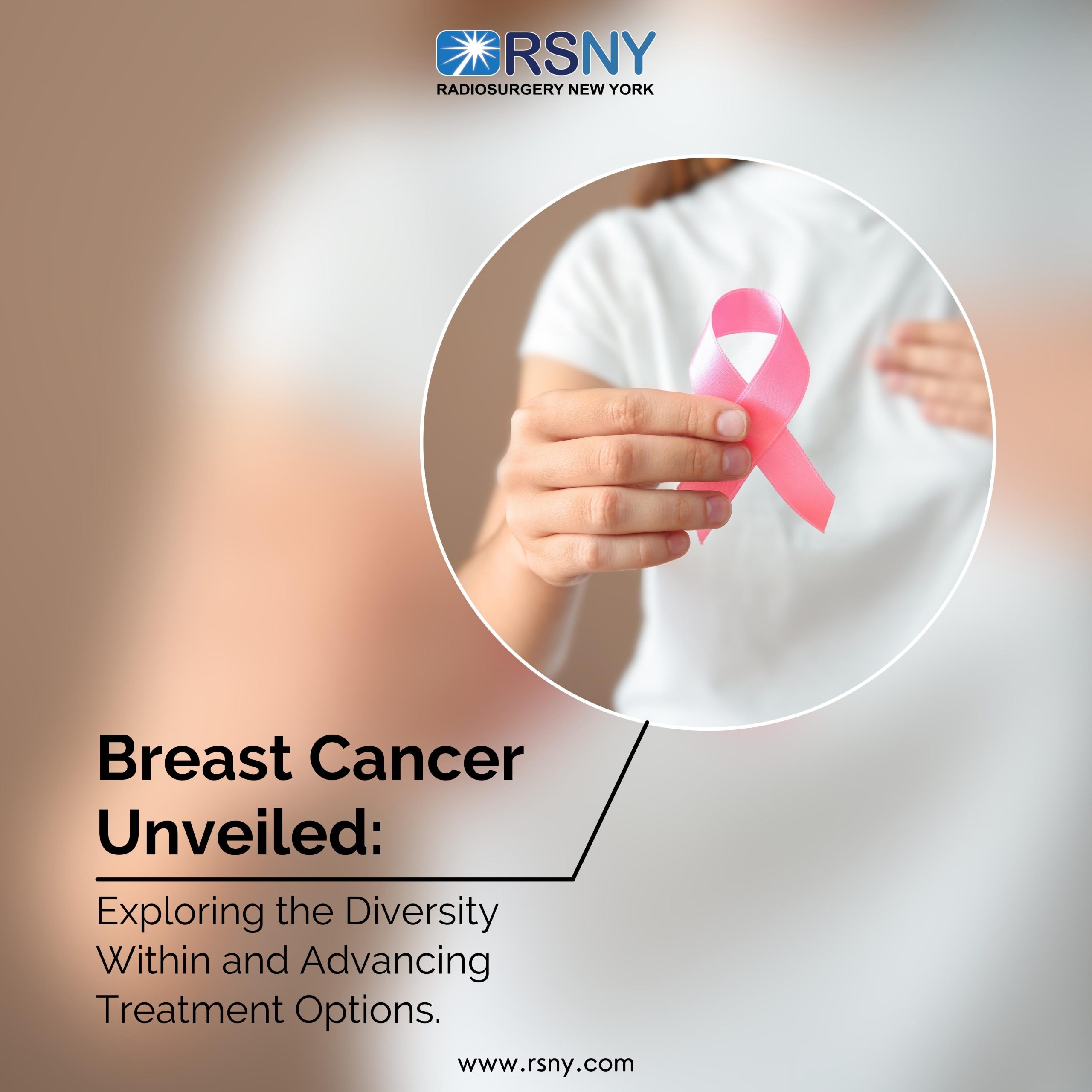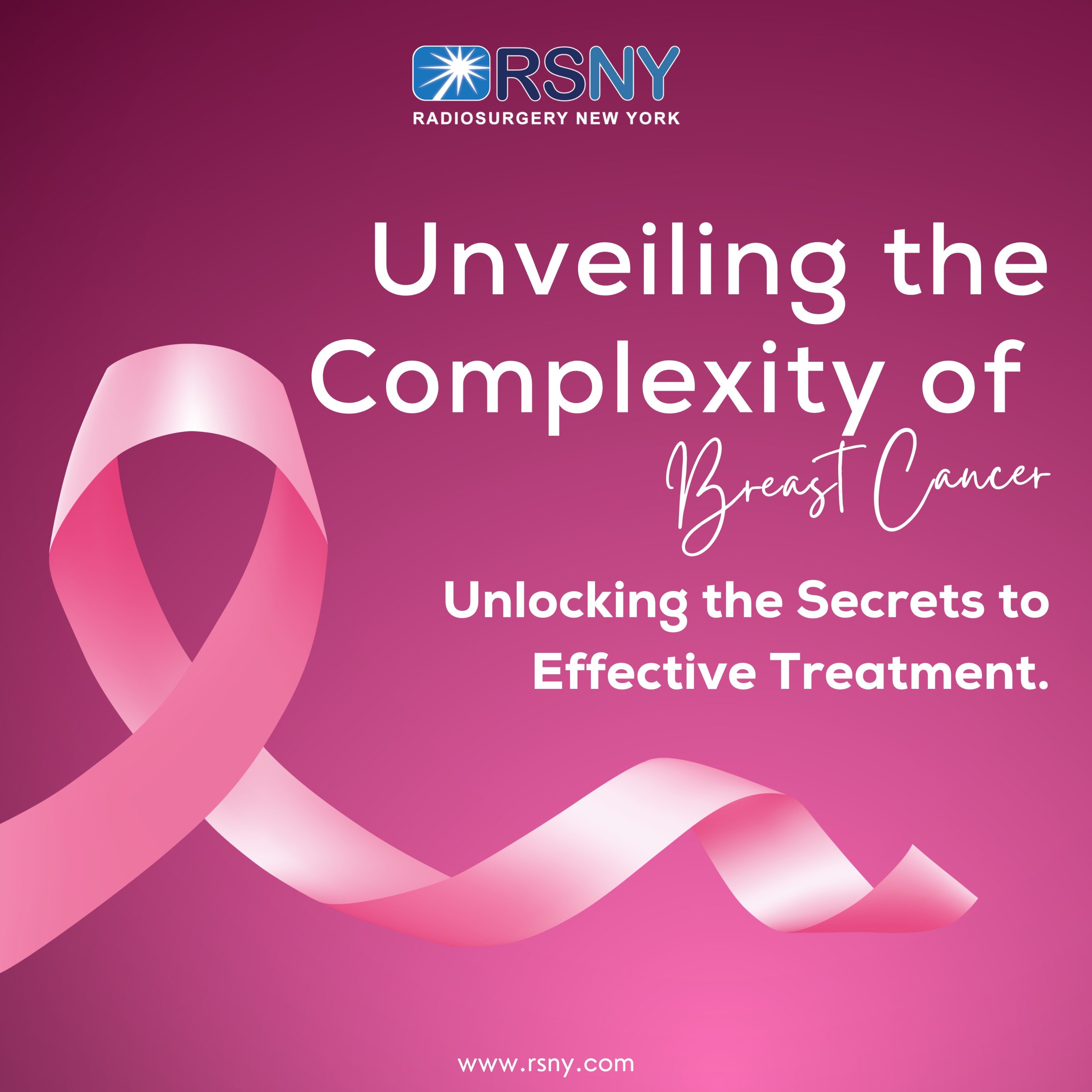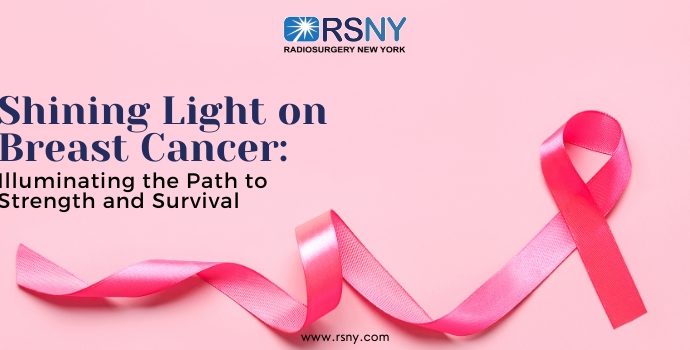Radiosurgery New York (RSNY) has shed light on the complex nature of breast cancer, stressing the importance of understanding its various types. This is a timely response to the growing public concern regarding the worldwide surge in breast cancer cases. Breast cancer, the most common cancer among women globally, is not a singular disease. It
Radiosurgery New York (RSNY) has shed light on the complex nature of breast cancer, stressing the importance of understanding its various types. This is a timely response to the growing public concern regarding the worldwide surge in breast cancer cases.
Breast cancer, the most common cancer among women globally, is not a singular disease. It comprises a spectrum of illnesses distinguished by different groups of cancer cells. The term “cancer in the breast” denotes a collection of cancers that begin in other parts of the breast, primarily the ducts and lobules.
Breast cancer is typically classified into various types based on where the cancer started, whether it has spread, and other factors. Notably, the two main types of breast cancer are invasive and non-invasive or in situ. Invasive breast cancer has spread from the milk duct or lobules to other tissues in the breast, while non-invasive breast cancer has not spread from the original tissue.

Exploring Diversity Within and Advancing Treatment Options
Invasive ductal carcinoma (IDC) and invasive lobular carcinoma (ILC) comprise most invasive breast cancer cases. IDC starts in a milk duct of the breast, breaks through the wall of the duct, and invades the breast’s fatty tissue, while ILC begins in the lobules and can spread to other parts of the body.
On the other hand, ductal carcinoma in situ (DCIS) is the most common type of non-invasive breast cancer, which means the cells are confined to the ducts and have not invaded nearby tissue.
It’s also important to understand that some breast cancers are hormone receptor-positive, meaning the cancer cells have receptors for the hormones estrogen or progesterone. These hormones are what fuel the cancer’s growth. Conversely, other types, such as triple-negative breast cancer, do not have these receptors and are typically more aggressive and harder to treat.
Crucially, breast cancer also comes in various subtypes identified through genomic testing. This sophisticated form of testing examines the cancer’s genes, which can offer valuable information about how the cancer will behave and what treatments may be most effective.

Unveiling the Complexity of Breast Cancer
Hereditary factors also play a critical role in breast cancer, with BRCA1 and BRCA2 being the most commonly mutated genes linked to the disease. These mutations significantly increase a woman’s risk of developing breast and ovarian cancer.
Radiosurgery New York underscores the importance of understanding the different types of breast cancer to improve diagnosis, treatment, and outcomes. This knowledge enables medical professionals to customize treatment plans according to the specific type and characteristics of the tumor. Treatments may include surgery, radiation therapy, chemotherapy, hormone therapy, or targeted therapy designed to target particular aspects of cancer cells.
Awareness and understanding are powerful tools in the face of a disease as multifaceted as breast cancer. It is hoped that with further advancements in research, better treatment options, and increased public awareness, people can lessen the impact of this disease that affects millions of women – and men – across the globe.
In conclusion, the diverse nature of “cancer in the breast” underscores the complexity of tackling this global health concern. However, through the tireless efforts of healthcare professionals and research institutions like Radiosurgery New York, there is a steady march towards more effective solutions. As knowledge evolves, so does hope for countless patients and their families worldwide.

















Leave a Comment
Your email address will not be published. Required fields are marked with *